Student Exchange Program
- TOP >
- International Exchange >
- Student Exchange Program
Tama Art University has concluded student-exchange agreements with numerous leading art universities around the world, and we regularly accept exchange students from our partner schools.
As a destination for international exchange students, the university is highly appealing for various reasons including the following:
- Progressive, hands-on classes taught by some of Japan's top artists and designers
- Among the most extensive facilities and environment for artistic production in the Asian region, including the Hachioji Library, one of the world's most beautiful libraries
- Creative and exciting interactions with extremely gifted and competent students who have passed our very competitive entrance examinations
Tama Art University welcomes outstanding international exchange students who want to gain new perspectives as artists and designers in Tokyo, Japan, a city where history, tradition and culture are in magnificent harmony with world-leading economic and technological development.
For application methods and procedures, please consult the staff of your school's international exchange center.
- * All classes are basically conducted in Japanese. While some faculty members are able to offer support in English, we strongly recommend that you acquire basic Japanese proficiency before participating in the exchange program.
- * We are not currently accepting applications from those who attend schools with which we do not have student-exchange agreements. If you would like to enroll in the University as a regular student, please contact our Admissions Office ( nyushi@tamabi.ac.jp).
- * We are not offering any spring / summer short course at present.
Contact: International Exchange Section ( intl-ex@tamabi.ac.jp)
Student Reports
- Year 2018
- Year 2017
- Year 2016
-

Esbjörn Grip
Home school: HDK, University of Design and Craft, Gothenburg Accepted: Architecture and Environmental Design Period attended: April, 2018 to August, 2018 I’ve been fascinated with Japan since I was a small kid, so when I got the opportunity to come to Tama, I was really happy. It started like for so many others with manga and evolved into a cultural interest. I wanted to learn more about the society and the Japanese design philosophy.
When I first came here I was so overwhelmed by everything. Arriving in march was beautiful, since there was cherry blossom everywhere. Tokyo is more than I ever thought it could be, there’s so much to do. The museums are world class and everything you do will amaze you. This city can feel so quiet and organised even though its the largest in the world. I would often just travel around and everywhere I looked there was something interesting. It’s a special combination of nature and huge skyscrapers with red blinking lights. I started taking a lot of photos while walking around the city, just to remember it all.
The food was amazing! Sushi might be the most famous one overseas, but in Japan, they eat so many other things. I learned to love Ramen and Okonomiyaki. Eating here is something I will truly miss.Not knowing the Japanese language was a bit frustrating since all the classes was in Japanese. Often I missed information and got confused. It made the education very challenging. But I must say, it also made for an interesting exchange. Finding other ways to communicate and learning by looking. The teachers are very accomplished and professional, and they have so much to teach. We learned to communicate through images and models.
Not many Japanese know any english but the ones who do was very interested in talking to me. The people I met were so friendly and I made a lot friends who gave me an insight in the Japanese Life. Being a foreigner was both a blessing and a curse. You got a lot of attention but at the same time, I sometimes felt alienated.
Tama is located on a huge campus, which was so cool for me since my home university is scattered in the city. The school here wants to be free but compared to Scandinavian design schools, it still maintains a lot of control over the students. People here don’t really make critical design, instead most of the works I saw were commercial, at least in the design department. But being here has been such a good compliment to my education. I learned to build models and prototypes and to think in a more functional way. People are so skilled with crafts and the presentation. I think the differences might just be based on culture.
Everything is just different - the teacher/student relationship, the bureaucracy and the classes. When I got used to going to school here it started to feel more relaxing and I could focus better on the projects. We were only 10 exchange students in total and that made a lot of interaction with the regular Tama students. It took a lot of time to get used to life here. But it has been the coolest experience of my life and Tokyo continues to surprise. Everyone who comes here sees different things, and I experienced so much that I can hardly remember it all.I really recommend coming here if you have the opportunity. You will leave this place filled with new perspectives, friends and memories. Being a student at Tama will surely make you grow as a person.
Cynthia Lee
Home school: Rhode Island School of Design Accepted: Graphic Design Period attended: April, 2018 to August, 2018 I was interested in Japanese subculture art like manga, game and anime, and how that can be brought into the modern art culture. Hoping that I would work in Japan in the future, I wanted to have a mini experience of life in Japan.
The biggest difference between RISD and Tamabi would be the critique system. Where RISD requires students to attend classes every week and talk together as a group about their work, Tamabi Illustration classes’ critiques were done 1:1 with the professor very shortly. I wish I had more chance to talk with professors (even though my Japanese is not perfect) to talk about what I am doing great and what can I do to improve.
The merits of Tamabi’s class system is that the outcome of the work is enhanced because students are given longer time to think and work on their project. RISD focused mostly on experimenting until now while Tamabi focused on bringing out students’ individuality to create their own unique portfolio. I encourage students to pre-think about what they really want to do as illustrators/designers, since there are not many projects and it will be a semester long.
It was a bit unfortunate for me that there was no free workspace (studio) for students to work at. The place I lived for 5month was not big enough for me to work with paint and brushes. We were informed that we can rent a studio but it looked like it was not used for a long period of time. Other than that everything about facilities were good. The printers and plotters were free to use (you have to buy your own paper roll for plotter though), and computer rooms were open for students to work.
Taajwar D’Van Howard
Home school: University of Cincinnati Accepted: Product Design Period attended: September, 2018 to January, 2019 So many people questioned why I chose to study at Tamabi. I have never been to Asia but I have always been interested in some products of Japan such as the cuisine, art, anime, and culture, but I had no perspective of what the real-life culture of Japan was like. With real Japanese lifestyle being an unknown, I also chose to study at Tamabi specifically because I was told it was a very rigorous program and I like a challenge. One of the biggest differences I noticed between America and Japan is the culture of waste.
In Japan, people are more thoughtful and respectful about their use of stuff, and I noticed its impact on things such as recycling, products, and even infrastructure. I was also surprised by how much responsibility and trust was given to the students by the school and the faculty, and how involved the faculty was in daily activities. I enjoyed the freedom I had to make decisions in my project because in the real world you don’t have a professor telling you what you have to do, you must make the important decisions yourself. I believe the freedom to decide things for myself and having to juggle the many difficulties of living in another country have helped me grow as a person. I am also trying to live more minimally and less wasteful like I was in Japan.
I think the best advice I could give to future applicants of the exchange program would be to live close to campus and try to live with or near other international students. Even though I was only a train station away, I was pretty far from other students. My time would have been significantly better if I only had people who lived closer to me.

Xiao Tan
Home school: University of Cincinnati Accepted: Product Design Period attended: September, 2018 to January, 2019 I didn’t put too much thought into my school-selecting process: my classmate from japan told me Tamabi is a well-known design school in Japan; the campus is really close to Tokyo; Japan is super close to my hometown in China. Therefore, I naturally put Tamabi on the top of my list.
A lot of things in Tamabi really surprised me when I first arrived. One of them is 6-days-a-week school days and having classes every school days. Unlike my university in the US, Tamabi has a clear “5 periods” system for daily class schedule, which means every day, is evenly divided into 5 time periods, and students go to different classes in different periods. Personally, these arrangements remind me of my high school experience.
The product design studio one I was in really shows its advantages. Students are working together in small groups, but everyone no matter which year he/she is in, shares one big workspace. In a small group, students get more chance communicating with their instructors; students talk to each other more, even though they could be in different years, when they were put into one same room. During my semester in studio one, I got my hands on two different main projects along with my other classmates. Both projects required us to collaborate with companies outside of the university. Students need to start with themes that provided by companies. Students also get mentoring and other resources from the companies. These kinds of projects can prepare the students for their future career.
In terms of student life, Tamabi has two cafeterias and two convenient stores in the campus. Students could use some extended open hours considering we are design students so a lot times we do need to stay late. Technically students need to come to school almost every day, but commuting between home and campus could be tough. Making studios open 24 hours including the weekend could be convenient for students. I really appreciate my experience in Tamabi. It’s such a special experience.Sami Bizien
Home school: Ecole supérieure nationale des arts décoratifs de Paris Accepted: Graphic Design Period attended: September, 2018 to January, 2019 I choose to come to Japan because I was very curious to discover the parts of the Japanese culture that we can't know about from overseas. Before studying graphic design, I've been doing chef studies and my passion for this kind of creativity got me interested about Japan gastronomy and culture. Then I chose to make graphic design studies and my interest move on to typography and Japan is a place where the work on typography looked very interesting.
I chose Tamabi for the Department of Graphic Design which looked really good and complete. I also liked the location of the university, living at 10 min from University allow me to discover Japan from an another point of view, and I liked the possibility to live between Tokyo and the mountain which took me a lot of time to discover.
The difference between my school (ENSAD) and Tamabi are big, if you firstly look at the organization of the two different structures school/university you can see a lot of difference, without thinking about the difference of education. Professors and staff are also different, I'd like to personally thank International Exchange Section for your support all along my exchange here, even if I had some trouble with my lack of speaking Japanese, I haven't had any problem during this semester.
In terms of good points on Education, administration and life in general, I would like to thank again to International Exchange Section for the support this semester. You had been very understanding about all the needs and questions I had to ask. I also need to thank Prof. Saga for all this semester. I found a very good professor who creates a very good relation to his students. Even if I haven't understood all the things told I have observed super nice work ambiance during all class. He took students to go further into their work thought and I guess work personality. I judge professor on the discussion we can have about work and culture and I shared good ones with him. Surely, he is a good professor that any student should work with. Also a big thank for all the cafeteria staff, very helpful and offering a good curry meal every day!
I learned a lot about my work and thought about how it would change in the future more than on any skills I guess, which is for me a very good evolution, I understood a lot on my working procedures and work subjects.
Advices for new applicants
Curry meal every day, everything is good but those are the best.
Enjoy the library a lot more than me, it's really big and full of books about many subjects to work but also discovers new things for the culture. Don't live on a budget with an apartment in Tokyo and prefer a good one in Chofu or near Hashimoto (mine was between Hashimoto and Uni) because you will have the mountain for background and the possibility to discover the beautiful nature of Japan. If you are in Graphic Design ask for the typography class I think that you won't be disappointed.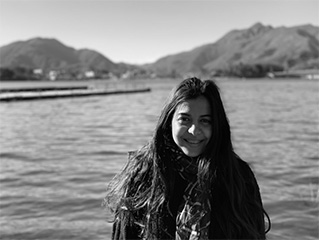
Astha Avinash
Home school: National Institute of Design Accepted: Textile Design Period attended: September, 2018 to January, 2019 I have always loved Japanese culture and have wanted to learn more. Running my eyes through the list of countries and programmes that my college offered for overseas exchange, there was one in particular that intrigued me — Tama Art University.
My affinity towards Japan, had contributed to this choice. Besides being keen to learn in a distinct land, I was curious to know everything about this Asian country — what has been, what is thriving and what will be.
The more pragmatic reason of choosing Tamabi is the wide range of course availability. With that, I knew I would have the freedom to structure a suitable study plan for myself. I was eager to explore the dimensions of my perspective through an art university. The variety of courses that Tama Art University offers covers a large range of options ranging from traditional to modern day textile techniques.
I am glad to express that my decision has proven to be fruitful — I have added abilities to form ideas and build individuality. While my home university helped me imbibe the core skills of design problem solving and design functionality, Tamabi enlarged my think tank and increased my versatility.As a life experience, Japan has been truly inspiring. Living and learning with highly skilful, humble people became my driving force, even in times of difficulty. The Land of the Rising Sun, is an apt title for this astonishing beautiful, extremely organized and super-efficient country. I am going to cherish these six months for a lifetime.
As a budding designer I wanted to broaden my horizon with international exposure. And I can definitely say that I have witnessed great learning through different pedagogy and skills development methodology. This journey of interacting with people and art, beyond language and cultural differences has helped me grow — in ways more than one. Apart from all this, Tamabi professors and especially International Exchange Section has been really helpful. I would recommend all the future students to learn basic Japanese as it will come in handy. The course at Tamabi and the culture of Japan inspires me to give my best potential in my future endeavours.
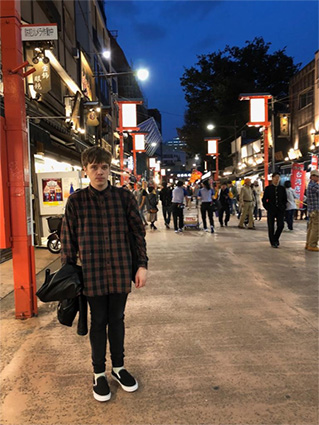
Matias Ylikangas
Home school: Aalto University Accepted: Graphic Design Period attended: September, 2018 to January, 2019 Japanese culture has interested me for a long time and most of my sources of inspiration come from this country, so applying for exchange studies in Japan was self-evident for me. I also wanted to do my minor studies in animation (I’m a visual communication design student) and Tamabi has a great curriculum for animation so, in that sense, Tamabi was the perfect choice for me.
Studying animation in Tamabi as an exchange student meant that I had lectures/classes/critiques only two days a week and the rest of the time I was working on my animation and designing posters for an illustration class. It was a lot of hard work and it took almost all of my free time, but I think the setting worked great for me. I also appreciate that I was given full control and responsibility over my work. In the classes we showed our progress every week and the professors gave advice on what to improve. At times there was a bit of a language barrier (I only understand the bare essentials of the Japanese language) but we always managed to work things out. It was quite a shock at first, but I got used to it and asking for help always paid off. Comparing my home school and Tamabi I think the biggest difference is that in my home school working is more of a group effort. Even if we don’t have a group assignment everyone always helps each other out and the critique sessions are more like a group chat, whereas in Tamabi (or at least the classes I was in) the work is done in solitude and students rarely seem to comment on each other’s work. I also think that in Tamabi the focus lies on perfecting technique and aesthetics rather than conceptual and critical thinking. Then again, maybe it’s harder for an exchange student to see those things.
In general, I think my exchange period in Japan has been very eye-opening and it has helped me build confidence and become more independent. I have been to Japan twice before, but still the culture shock really got to me during the six months I lived there. I think that if you prepare and acknowledge these things, it’s much easier to cope with them when they hit you.
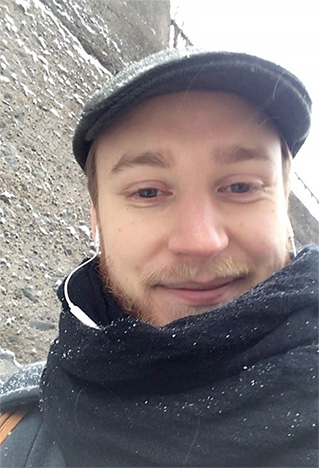
Agust Gydemo
Home school: Oslo National Academy of the Arts Accepted: Textile Design Period attended: September, 2018 to January, 2019 I have been interested in the special way of thinking about and handling craft one can find in Japan for a long time. I also wanted to experience a different culture under the umbrella of a school environment and exchange ideas with fellow artists but in other countries.
Japan is a beautiful country with a lovely, if somewhat shy, people. The food is much better than in Scandinavia and I enjoy the culture more. The staff at Tamabi is lovely. Everyone in the exchange office, in the cantines and in the teaching staff is very helpful and nice.
The Tamabi campus and library are great. All the workshops are impressive, so it is a shame that students are not allowed access to them easily.I have learned some basic Japanese and some about the rich culture. Some new techniques and artistic practices have been taught me as well.
I would advise anyone going to Japan to study the language well beforehand. I could not participate in more theoretical and advanced courses because of the language barriers between teachers, students, teaching materials and myself.
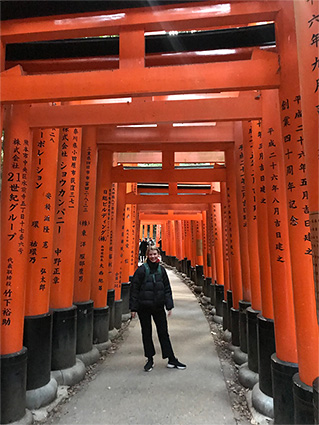
Pia Gjermo
Home school: Oslo National Academy of the Arts Accepted: Architecture and Environmental Design Period attended: September, 2018 to January, 2019 I chose exchange program for Tamabi because I wanted to experience the culture of Japan and learn about Architecture and design in this part of the world. Tamabi was very different in many ways from my home university. The school is very big and the campus is very large. At my home university I study interior architecture, but in Tamabi I got to study architecture and landscape design, something that I liked very much and I learn a lot!
I loved staying in Japan, even though it was very confusing at times and I didn’t understand the language, it’s a good thing that Tamabi has a very good and helpful international exchange office and that people in Japan are very generous and helpful. I wish that I learned more Japanese before I came to Japan, but I manage anyway and I learned some in the Japanese classes at Tamabi! Overall I really enjoyed life in Japan, and hope to come back someday.
Katy Clark
Home school: Glasgow School of Art Accepted: Textile Design Period attended: September, 2018 to January, 2019 I Chose to apply to go to Tamabi because I had always been intrigued by Japanese culture, as it is so different to my own in the UK. I have also always admired the textiles and fashion of Japan such as the traditional embroidery and Kimono. Compared to GSA, Tamabi is a lot more structured and students in the same classes are doing similar projects, whereas at GSA the students are left with more freedom to create our own projects. Tamabi was a very inspiring place to work, and I thought the classes were all well taught and interesting. The Uni life was very inspiring due to the beautiful campus grounds, buildings and friendly, helpful staff and students. Whilst at Tamabi I learnt to become inspired by my surroundings and to see a project through from start to finish. While in Japan I learnt to be more independent and adapt to a new way of life that I was at first unfamiliar with. I also managed to use my time in Japan to travel and take in some of the beautiful sights of Japan. I would advise future applicants to Tamabi to document their surroundings and projects throughout the exchange and to go out and explore.
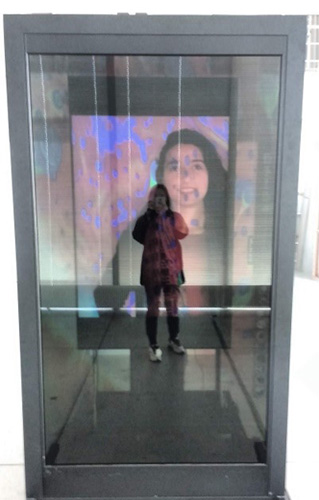
Caroline Neumann
Home school: Berlin University of the Arts Accepted: Information Design Period attended: September, 2018 to January, 2019 A sum between support to develop projects; access to techniques and handcrafts; and the contact which artist and cultural practices which are quite different from where I have been were the points that I was looking for when I chose Tamabi to study.
Different from the University where I’m enrolled, the Berlin University of Arts, where the buildings of the university are spread in the city, Tamabi is based on a campus, which is far from the city center of Tokyo. That aspect helps to focus on the studies and also to have a close contact which the university community, on the other hand, somehow it’s quit isolate from the city, which makes the dialogue between artistic practices and the surrounding society more difficult. Besides that, Tamabi has a much more professionalizing approach, aiming well-presented projects, contact with galleries and internships in companies.
Because it’s really impressive infrastructure and facilities, Tamabi offers really good conditions to study. From the administration team to the department staff, everyone from Tamabi are always willing to help you, even if you don’t speak Japanese, they will try and figure out a way to help. The machines and laboratories are easy to access; the spaces are well organized and prepared for the different artistic practices that they propose.For future applicants to the exchange program at Tamabi, I would suggest to stay tuned at events that are held outside the period of the classes, such as workshops, exhibitions, film screenings and talks. Most of these are in Japanese, but even so it’s possible to enjoy and to learn much from it. Maybe the main point is to be curious: ask things, go to the workshops, visiting the gallery.
In this experience in Tamabi, I could not only find what I was looking for, but also I’ve learned to be more open and sincere, to deal with the unknown which more curiosity and less fear and that communication is much more than a question of language.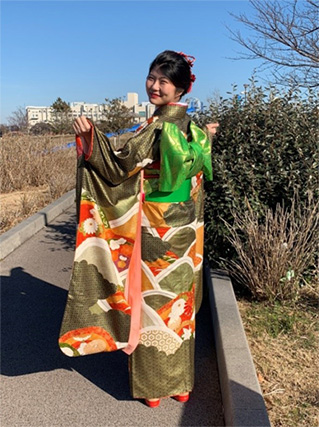
Huang Min
Home school: National Taiwan University of Arts Accepted: Information Design Period attended: September, 2018 to January, 2019 Since I was little, Japanese animation and comics have always been in my life and influenced my way of thinking. When I was in college, I started to watch Japanese movie and TV show, and fell in love with them. So, after studying Japanese for three years, I finally come to Japan.
Every teacher I meet in Tamabi is full of enthusiasm and welcomes any ideas, so it is fun to discuss the concept of work with them. Also, there are always many stunning exhibitions held in the campus, and lots of movies able to be borrowed in the library. And, I am grateful for having the chance to take PBL course. In this class, I participated a program with Japanese students. This experience not only improves my Japanese speaking skills, but also gets to know about the process of project in Japan. The most important thing is I make many friends in the class due to the discussion and corporation in the project. Every classmate is so kind and it is so hard to say goodbye to them.
My advice for the future exchange students is to do challenge as more as you can, like traveling, home visiting, part time job, Japanese communication party and so on. More new things that you try, more people that you meet, more lifestyle that you know, more different life that you can choose. This half year has really changed me and my life, and I am grateful to everyone I met in Japan.

Meng Fanwen
Home school: China Central Academy of Fine Arts Accepted: Graphic Design Period attended: September, 2018 to January, 2019 Firstly, I’m really appreciated for international exchange chance provided by school, and it’s a great honor for me to attend this university for one term. I have known exchange students from all over the world and a plenty of new Japanese students and teachers. I have attended a great many interesting activities and courses, what an amusing term!
My major is Picture book when I was in my alma mater, and I was researching works related picture book and illustration. In my alma mater, professors often share excellent design works and wonderful designers from Japan with us. So I have developed interest about Japanese design and culture, especially for my major, illustration. The illustration of Tama Art University is famous all around the world and there are a number of awesome works that is very attractive for me and I would like to exchange and experience life here.
Japan is a very clean and tidy city, and everyone is polite and respects with each other that makes me admire them. When I landed here I fell in love scenery here and I enjoyed myself here as to forget to leave. The course schedule in the university is also interesting, and I have experienced making poster making drawing books as well as pop-up books here and teaching methods and course contents that I never experienced in my alma mater.
I have learned a lot of new things and I have gained a good deal of knowledge from course which I couldn’t get from my alma mater. These courses for me are more like amazing gifts.I’m also grateful for staff of the international division. They organized us to visit tourist attraction such as Tokyo Tower and Tokyo Sky Tree which make us relax from academic tasks. We not only experience abundant courses but also feel the charm and attraction of Tokyo. We still tasted Japanese local delicious food, buckwheat. It tastes really delicious!
Last but not least, I’m very thankful to this chance provided by my university and Tama Art University and I’m very happy to spend such a fulfilling term!
-
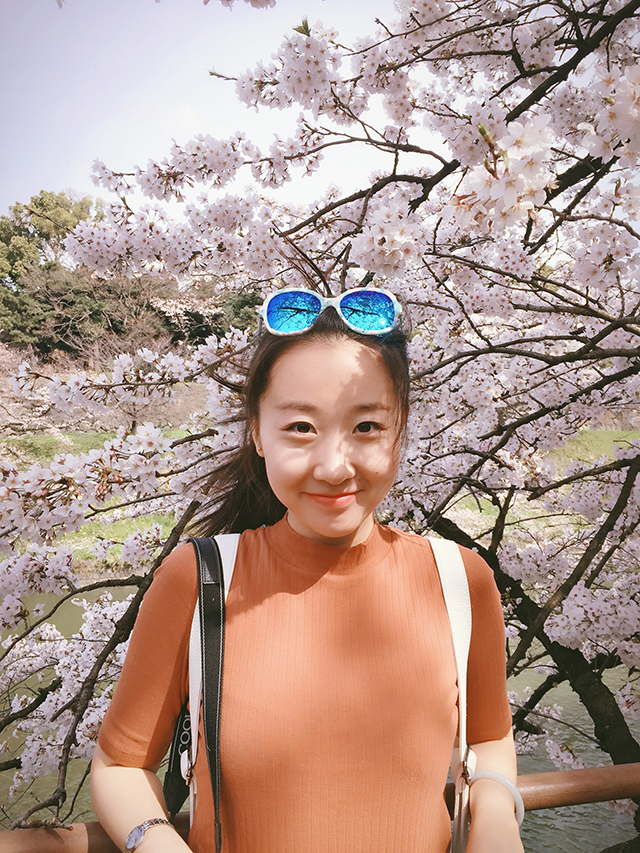
Zhang Qiaoxi
Home school: China Central Academy of Fine Arts Accepted: Graphic Design Period attended: April, 2017 to August, 2017 As we all know that Japan is famous for design in the world and Tama Art University has developed a number of leading designers in field of Japanese Graphic Design. This is why I chose Japan for my first place and try my best to become an exchange student in Tama Art University.
I am very interested in the modules of the program about graphic design in Tama Art University. I think that the academic atmosphere here is really different from my home university. It is freedom of design guidance and complete setting in design project. In Tamabi, I have communicated and cooperated with people from different backgrounds. We have exchanged the experiences that we experienced and discuss the cultural differences. It is a wonderful experience for me to exchange here. And the library of Tamabi is so helpful for me. I can research and discover so many design knowledge and have more interesting idea in my design work.
Finally, thanks very much for Tamabi to give me this opportunity to be an exchange student. And thanks for teachers who taught me and helped me in my exchange time. It is an unforgettable memory for me. Thank you very much!

Dasom Cho
Home school: Hongik University Accepted: Textile Design Period attended: September, 2017 to January, 2018 There are several reasons I chose Tamabi. In fact, I have been interested in Japan because of Japanese dramas and J-pop. I always wanted to go trip to Japan or to live in Japan. This is the main reason I decided to go to Japan. Searching the Web for information about Tamabi, I found Tamabi is one of the most famous art universities in Japan and the textile design department of Tamabi is also prominent. I also visited the homepage of Tamabi and saw some pictures of facilities. I was fascinated by its excellent facilities.
My life at Tamabi, Japan was like dreams. After starting to study there, I found Tamabi is the best place for students to do their works and to study. In reality, of course, the facilities were outstanding. There are enough space and proper equipment for every student. Besides, every person of Tamabi was so kind. They helped me whenever I asked for help. I appreciate it. I could concentrate my mind and efforts only on my works, thanks to them. Also, one of the reasons I was satisfied with my choice was travel in Tokyo. Tokyo is great for traveling alone. Especially I liked Japanese traditional buildings. There are many traditional buildings in Tokyo and I was inspired by them.
All classes I took at Tamabi were dyeing classes. In the classes, I learned Japanese traditional dyeing techniques called Yuzen and Katazome. I have never heard about these techniques before I studied at Tamabi. I was so glad to learn something entirely new.
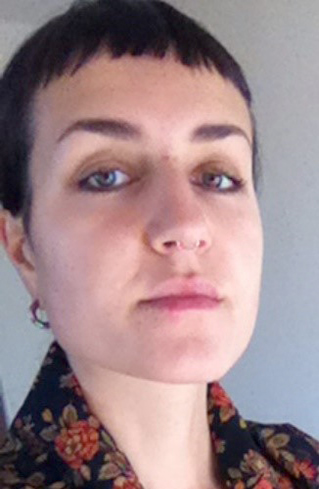
Milla Vainio
Home school: Aalto University Accepted: Department of Ceramic, Glass and Metal Works (Ceramic Course) Period attended: September, 2017 to January, 2018 I chose Japan because I have been really interested in Japanese culture and art at very long time. My home school is more design school, not so much art-school like Tamabi. I’m more like art person so Tamabi were exactly right choice for me.
I felt that in Finnish and Japanese cultures are quite similar, people were really friendly but formal. Maybe that´s why I didn´t felt that much culture-shock when I came to Japan.
I liked very much that courses were really good scheduled, professors were truly interested in my works and I get useful critique. I also liked our Art Festival-week, was nice to see students works in different departments (for me and also for people from outside school) and whole event were nice organized. Most of courses techniques were familiar to me but I think I learned quite a lot about myself an artist and I assume that I’m now more relaxed in my work. I also think that now I have some kind of perception about Japanese culture and lifestyle. I want to come back to learn more as soon as I can.
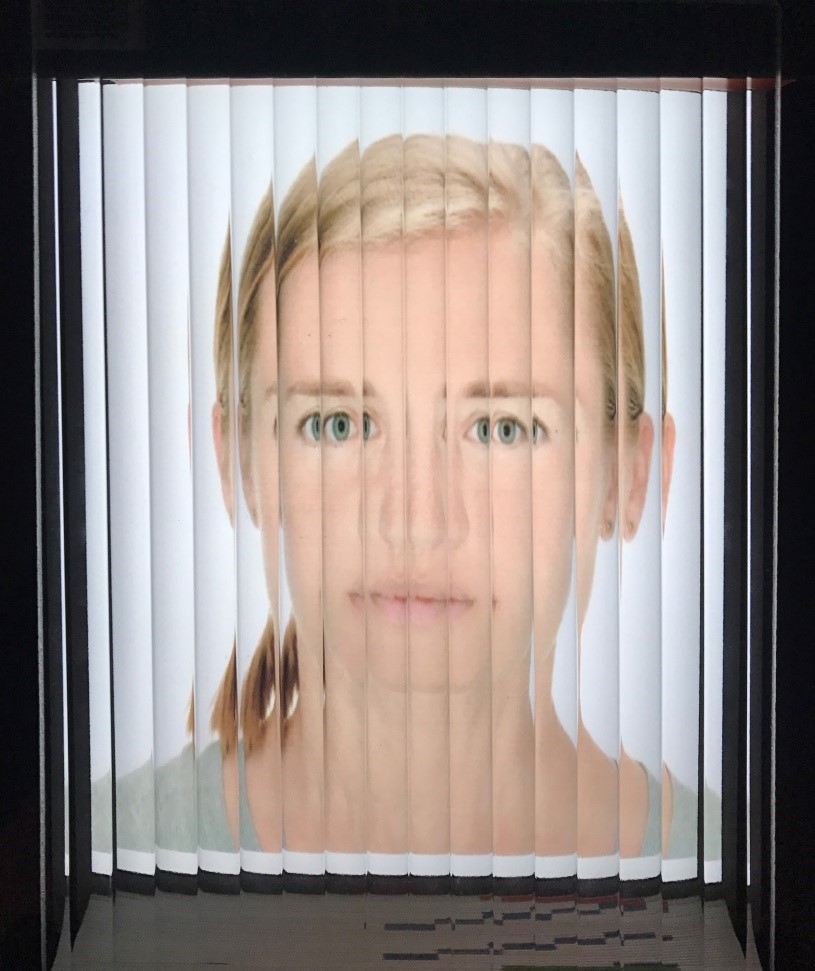
Valeria Nekhaeva
Home school: Aalto University Accepted: Information Design (Art and Media Course) Period attended: September, 2017 to January, 2018 I believe that putting oneself in a different environment stimulates new ideas and leads to new understandings of the world around us. Spending one semester at Tama Art University is a unique opportunity to explore a rich Eastern culture.
I guess the main difference is that Aalto University is not only an Art School, but it combines the departments of Engineering, Computer Science, Applied Physics, Mathematics, School of Business, etc. All the departments will be soon moved to one campus and we are expected to collaborate with each other. Multidisciplinary approach is valued the most.
Tamabi has great facilities and everything you need to experiment with new ideas. There’s a lot of attention from the faculty and the campus is very green which makes it a great place to be.
Japan, with both a high tech culture and a traditional culture, is a very special place to observe the impact of technological advances. This is what I’ve been busy with here.
I will recommend Tamabi without any doubt. It is a special opportunity to broaden your professional identity, and to develop artistic practice within a different - and rich - environment.
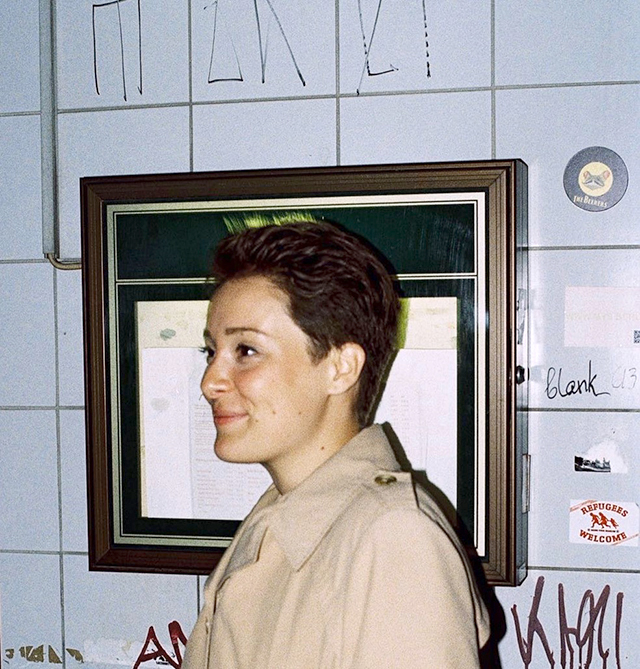
Helene Peters
Home school: Berlin University of the Arts (Universität der Künste Berlin) Accepted: Architecture and Environmental Design Period attended: September, 2017 to January, 2018 I chose Tamabi for my semester abroad for a couple of reasons. Firstly, I wanted to go to Japan in order to experience a culture utterly different from everything I had experienced before. Secondly, Japanese architecture and design are very well respected and appreciated in Germany and Europe and I wanted to find out more about it, in particular the interplay between traditional values and extreme modernity. Thirdly, I liked the idea for the degree in Architecture and Environmental Design to be rather general, meaning you could do projects in Landscape Design, Architecture and Interior Design and thereby broaden your knowledge in all of these bordering fields. The courses give much space for independent work.
At Tamabi the relationship between the Professor and the Student seems less personal than at my home school, which resulted in me working very autonomously. All the professors and assistants are extremely nice though. I enjoyed the campus, which is extremely well kept, and, of course, in particular the library which offers a great place to work next to the studio. The most important things I have learned at Tamabi were how to deal with challenges of independence and communication. Coming here with extremely limited Japanese it was not always simple, or even possible, to properly explain the things I wanted to do, ask the questions I needed to ask or find out what was expected of me. It took patience, humor and a lot of calm to manage to communicate. In the end, I learned to simply let the work speak for itself and, therefore, to make my work as self-explanatory as possible. As for personal communication I tried to simply go with the flow as much as possible, which I highly recommend for anyone coming to Japan.
The difference between Japanese and German, or European, culture was also considerable in a lot of aspects. At first it confused me, took me aback, but at some point I more or less got the hang of it and developed a sense of familiarity with the Japanese outlook. For any students, in particular those who study architecture, coming to Tamabi in the future I advise you to take as many walks in Tokyo as possible. What makes Japanese spatial understanding so interesting is their understanding of inside and outside. It is surely possible to read up on it, but to really fathom these concepts I think it is necessary to experience as many of these spatial situations as possible.
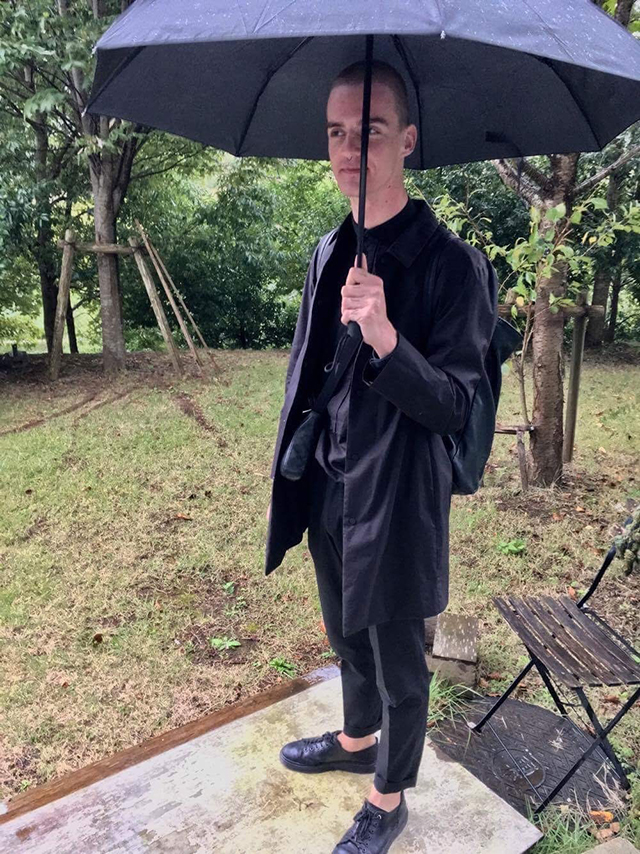
Tobias Groot
Home school: Gerrit Rietveld Academie Accepted: Information Design (Art and Media Course) Period attended: September, 2017 to January, 2018 I chose to come to Tokyo to see how my fascination for intimacy and sexuality would develop in a country that’s know for its unique approach to these concepts. Since I work a lot with new media and digital imagery, I decided Information Design would be a good department to develop my skills with software. Being offered with the amazing opportunity to come to Tamabi for a semester, it is an experience I am forever thankful for.
Obviously there’s a huge difference in culture, and these differences are also noticeable within the universities. The relation between professor and student is different, more hierarchical and respectful in Japan, whereas back in Amsterdam communication is more informal and sometimes harsh/rude, but always honest.
In Japan I have learned to appreciate craft more, and to be less overwhelmed by technology. Because there’s so much exposure to technology, also in art, I started to rethink my perspective on it. I think coming to Tamabi would be most fruitful when following courses within a department that is focused on craftsmanship, since there’s so much to learn and the workshops are great. The kind of rational, conceptual way of thinking that is applied in Western art is less important in Japanese art education. That's why I would advice other exchange students to focus on design and craftsmanship because it’s so well developed.
Tamabi is a beautiful and relaxed environment and just walking around the campus is a delight. Next to studying, Tokyo has been a great city to explore and try to learn about. There’s a lot going on, and its vastness allows for everyone finding something they like. Food is great, people are polite, and overall respect make for a comfortable and easy urban experience.
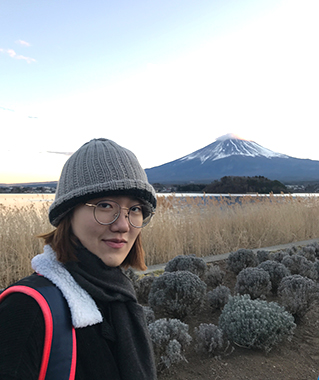
Yen Chieh Hsu
Home school: National Taiwan University of the Arts Accepted: Graphic Arts Period attended: September, 2017 to January, 2018 Since Tamabi is a famous and excellent Art school in the world as we know, I decided to take this challenge and applied for exchange program at Tamabi. Also, Tokyo is an amazing city that has diverse cultures, many possibilities and beautiful histories. Because of those reasons, I choose to apply for Tamabi to study for half year. It was a great choice.
In Tamabi, the learning environment is really nice and professional. You can find any professional equipment you need at school. It helps students to learn faster and students don’t have to worry about the lack of resources. Courses I took at Tamabi were intense but interesting. The professor from printmaking department gave me lots of freedoms of making art works but it didn’t mean there was no standard. The professor played a leader role and led me to create better works instead of only telling me what do I had to do.
Not only learned about making better work in Tamabi but also the Japanese culture, social skills, being independent in a different country and so on. I love Tokyo, I love Tamabi because I met kind and intelligent people there. In the beginning was a bit hard to blend into a different culture but I made it and I had amazing experiences in Japan. I would like to go back to Japan someday again because there’s always something new is waiting for me to explore it.
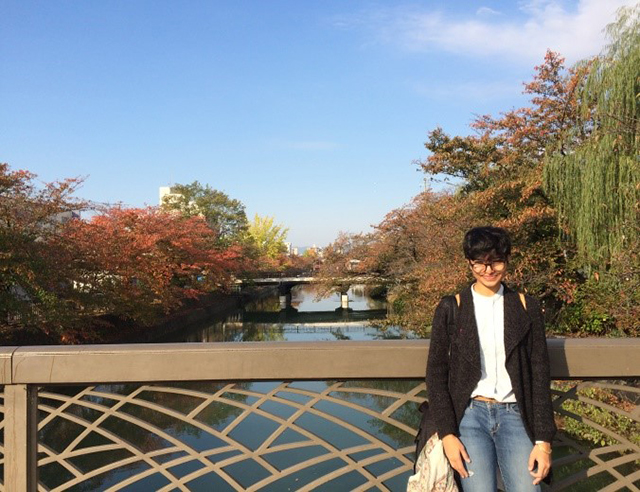
Sudeshna Saxena
Home school: National Institute of Design, Paldi Ahmedabad India Accepted: Textile Design Period attended: September, 2017 to January, 2018 Being on exchange in Japan has been one of the best experiences of my life. A country where the language and culture are foreign to you, the task of studying and making it worthwhile over five months is a task both thrilling and scary.
I chose Tamabi because I wanted to be in a cultural context different from but equally rich as my own. I learned a lot, not only in my discipline (textile design) but also from everything else I was lucky enough to experience. My school in India is a design school and Tamabi is an art school. The approach taken by the professors at NID in India is very different from how the professors teach at Tamabi. There is a lot of freedom of expression. The work culture at Tamabi is what impressed me the most. The discipline that people have regarding their work is truly remarkable and inspired me to push myself. The students were extremely nice to work with and it was refreshing to see multiple different perspectives in the field of textile design. The focus on quality and time management has helped me by making me focus on finer details without wasting too much time.
Life in Japan was very smooth. I was exposed to a new level of responsibility because I was also living alone. The international exchange department was extremely helpful whenever I had any issues that I could not have dealt with on my own. I am truly grateful for the guidance and timely advice.
I highly recommend future Tamabi exchange students to attain a basic working understanding of the Japanese language as there were times at which communication was a challenge. Being at an art institute, having the professors understand your concepts and ideas is of utmost importance and I feel that knowing basic Japanese could facilitate this further. All in all, I would like to conclude by saying that I had an unforgettable experience in Japan and I want to thank everyone who was a part of it.

CHOI Soomin
Home school: College of Fine Arts, Seoul National University Accepted: Graphic Design Period attended: September, 2017 to January, 2018 I decided to study in Japan because I have a great interest in Japanese character design and illustration. It was a great opportunity to learn about illustration and do my work in Tamabi because my school in Korea doesn’t have much class about that. I loved the free atmosphere in illustration classes and to look at the works which other students done. Also print facilities in graphic design department were really helpful for doing my assignments and works. Unfortunately, there were not many chances to talk about other student’s works and communicate with them, since the number of illustration class hours was really small. Applicants to the exchange program at Tamabi should learn Japanese in advance unless you want to waste those few class hours.
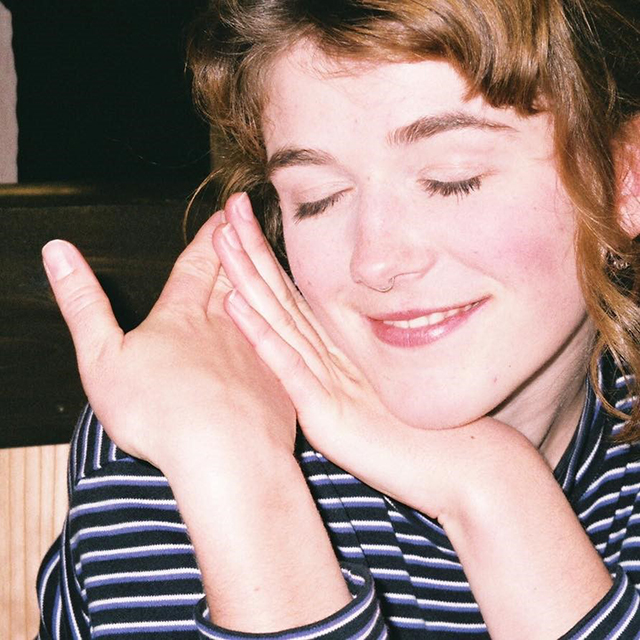
Oda Iselin Sorcha Sønderland
Home school: Oslo National Academy of Art and Design Accepted: Graphic Design Period attended: September, 2017 to January, 2018 In my school we had an exchange program to Tama Art University. I have always been interested in Japan and the Japanese culture, so I saw this as an amazing opportunity. I did not know much about the school in advance, and I had barely any Japanese skills, but I took the chance.
I think the difference between Oslo National Academy of Art and Tama Art University would mostly be the cultural difference between our countries. I got the impression that the Tama students were more interested in making beautiful and detailed posters, with a sort of modern pop-art vibe. I did not see much critical design, and it seemed more important to make things that would be used in marketing. I suppose this has a lot to do with the current Japanese culture. My school in Oslo, I would say focus more on the process and the idea behind the product, and then the aesthetics follows this idea. We also have more lectures on critical design. Sadly, the lectures in Tama were mostly Japanese, so I cannot really know for sure what the Japanese way of thinking is around design.
If I needed help I could always go to the exchange section, they were very polite and friendly, and they would do anything to help me out. I have learned a lot about the Japanese people and culture, things that I like and things that I dislike. All in all, I am in love with Japan and can’t wait to learn more Japanese, and come back.
For the future applicants, I would just advice to be prepared that Japan has a very different culture from the west, you will be constantly confused, offended and feel awkward. So, I want you to come with an open mind, allow situations to occur and try to just relax. Remember, you are in someone else’s country, they have their ways and ideas, and you are free to disagree and speak your mind, but just remember to respect that. It is difficult, and you will get a culture shock. But it will pass, and things will be easier. The people I have met are amazing and so lovely, I believe I have made friends for life. My last advice would be to start learning some basic Japanese before you go, it will be strongly needed in many situations. You can manage without, but your trip will be much more amazing if you have a little bit of basic Japanese.

Kelley Gessner
Home school: University of Cincinnati Accepted: Product Design Period attended: September, 2017 to January, 2018 I chose to study Product Design in Japan because the exceptional culture is inspiring and I saw it as a way to challenge myself as a person and designer by immersing myself in something I have never experienced.
I was particularly interested in Tama Art University because they are a smaller institution focused on many art disciplines. Being around many creative students from different disciplines was very intriguing because I wanted to incorporate many of these practices into my own designs. I became very interested in the Textile department and was pleased to become close friends with the other international students and Japanese students that were taking courses in this area. I was able to see their processes and end results as we developed our friendships throughout the semester. I was taking courses in Product Design and the course work in Studio 1 was incredible. I worked with two very well renowned companies, Fuji Film and Uni Mitsubishi. Each of these companies gave in person critiques weekly and as a student I was able to work on projects with authentic applications.
The administration and students were very accommodating and understanding of the language and cultural barrier I faced. The International Office and the Product Design administration made me feel welcome by including me on the events going on in the school and by putting on a separate event for the international students to be introduced to the other English speaking students outside of our main disciplines. I wish I had learned even more of the language beforehand, but nevertheless, I made lifetime friendships, learned a new culture, gained many perspectives, and overall grew as a person and designer.
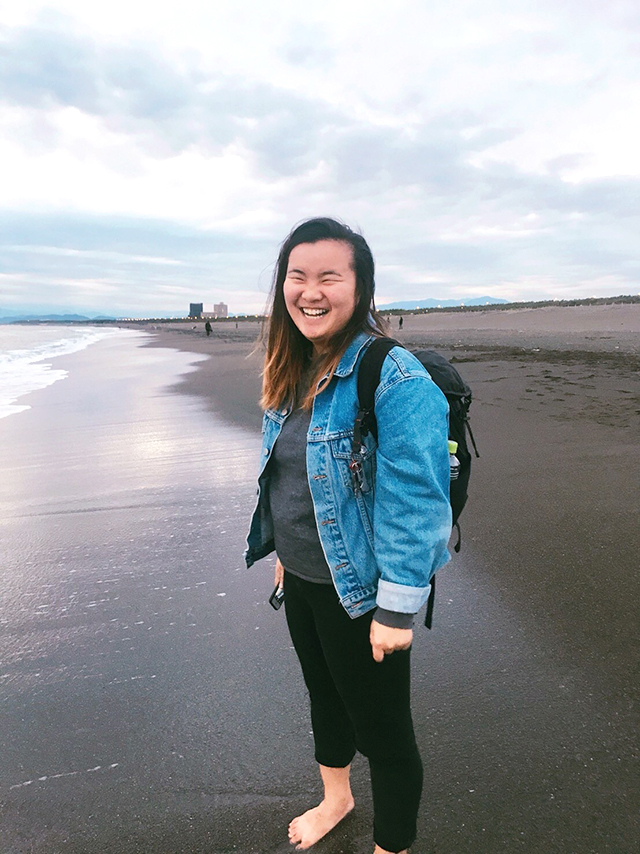
Lily Steiner
Home school: University of Cincinnati Accepted: Product Design Period attended: September, 2017 to January, 2018 When I first started planning for study abroad I knew I wanted an experience that was different from my school that gave me a new viewpoint on design. My University at home is a large public University that offers a large variety of majors. It was great to go to a small arts school. There are lots of different experiences, events available to me at Tamabi and in Tokyo that I would have never gotten exposure to if I had stayed in Cincinnati.
It was easy to adapt into student life while at Tamabi. The staff is collection of amazing designers and it was great to get their insights and perspective on my work. The students are very nice and friendly, but can be a little shy at first. They try their best to help you if you need anything. The facilities are great and there are a lot of machines available to use. The school store and paper store have most supplies you need, but there are lots of crafts stores located in the city that most students and teachers can tell you about if you ever need anything specific.
While I was at Tamabi I took a couple of product design classes as well as a lecture class. Throughout the semester I was able to complete several different projects. Most of my projects taught me new ways of thinking and looking at projects. Design and inspiration can be found in the most unexpected places and its important to understand and utilize this. My professors and students pushed me to think more creatively and to question the purpose of why I design products on a much deeper level.
My advice to future exchange students is that it is an amazing experience to study abroad in Japan, but to really be aware that English really is a secondary language in Japan. Communication can seem hard at first but there are many ways you can connect with students even if they don't seem completely comfortable with English at first.
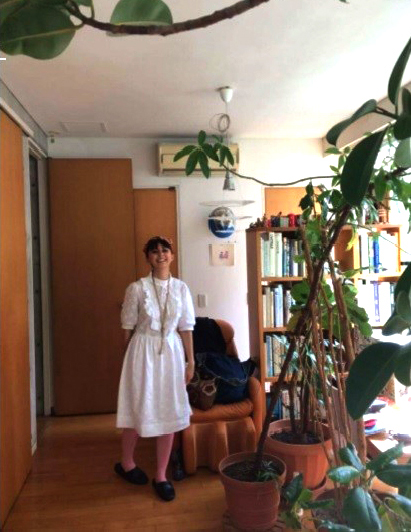
Claudia Kerr
Home school: Chelsea College of Art UAL Accepted: Textile Design Period attended: September, 2017 to January, 2018 I chose to come to Tamabi as not only have I always been fascinated with Japanese culture, the school looked very innovative, working on exciting projects such as the banana fibre project. I loved how they work with natural materials and wanted to look closer in to sustainability which is very similar to my school back home. We focus a lot on Architecture and Environmental Design, and I love how Japanese textiles is closely linked to using Japanese natural materials such as rice, nori and basho and using slow processes to produce work. I thought it incredible how hardworking all the students are in textiles at Tama, they are all so motivated which was really great to be a part of. I also loved how expressive they are with color, which is an important element to my own work and has definitely made a lasting impression on my practice.
During my exchange I have learnt so much about Japanese culture and daily life. It gave me the time to also learn more about myself and what I am capable of. Coming to a country like Japan which is so unique, was a really challenging task and I am really proud I made it here and bonded with so many new people from around the world. It is very different to my life, and school back home in so many ways. I had never given a presentation about my work to my class before Japan where the final product and technique is the most valued aspect. In Chelsea there is a lot of focus on concept and development including a sketchbook. The end product almost isn’t as important as your progress to get there. This was a big change in my way of working and although it was tough, it will definitely help me progress in the future.
Advice I would give to future applicants would definitely be to learn as much Japanese as possible… the hardest aspect of the course is the language barrier, so the more you know the easier it will be to follow and communicate with the Sensei’s and fellow peers. Also be prepared for long working hours and lack of food for vegetarians/vegans at Tamabi! But the International Exchange Section at Tamabi will be the biggest help and source of advice for any student. I really appreciated this service during my stay in Japan.
I have really loved my stay in Japan so much! There have been some difficult spots to get through but those only made the good times even more special. I think Japan is such a beautiful country and so interesting. I have always felt really safe and well looked after by those around me. It has definitely been an experience that will change my life forever. I see myself, others and pretty much the world in a complete new light! I have learned what I appreciate the most of my own country, and what I think our (English) society could improve on. Japan is so peaceful and rich in history and traditional, which I love so much. I will definitely be returning to Japan one day as there is still so much I want to see, though I feel satisfied leaving now as I have met some amazing people, worked hard at my studies, experienced all of Tokyo and a few other cities close by which were all really special moments. Thank you Tamabi for accepting me and allowing me to join your amazing community of creative people!
-
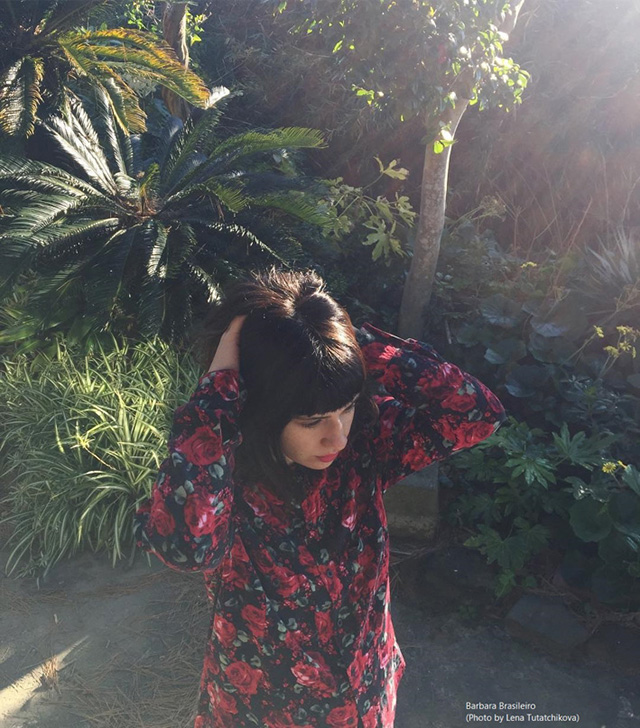
Barbara Brasileiro
Home school: Aalto University Accepted: Graphic Design Period attended: September, 2016 to January, 2017 I’m originally from Brazil, and I moved to Finland to start my master’s studies because I believed in the positive influences and experiences when you are in a new environment. Being accepted in Tamabi took this beliefs to another level, bringing so many inspiring moments and people. This was my first time here, so I was already overwhelmed by so many aspects, and having the chance to be part of the Tamabi life made all ‘over-special’.
I firstly choose Tamabi, for its well known recognition of one of the best art and design schools in Tokyo. Also, the campus facilities are outstanding and to make it even better there is the wonderful Toyo Ito Library I had the privilege to spend hours inside studying. After arriving I found the campus even better with the mood in it being so friendly and full of hard work and focused students. To see so much effort and good work production was really inspiring and stimulating. Also we had the privilege to have some interesting cultural activities for the exchange students.
I learned more about the importance of finely tuned materials and processes to yield desired results for my future designs. I had a great time learning the process of traditional Japanese indigo dyeing and how to apply that to new and interesting materials and processes. I picked up some Japanese, but definitely not enough. The professors are all world renowned designers and was exciting to have them critique my work and teach me new tricks to get inspired and create.
At Tamabi I was able to take graphic creation, Japanese typography and photography courses, using its incredible facilities. The decision of my exchange was made quite fast, because of that, I didn’t have time to learn the language. But my eagerness to come to Tokyo, and to Tamabi were really strong. They believed on me and my communication skills, and I am very grateful for it. Also the staff in the university was kind and helpful. I believe I made the best choice and I was fortuned with an incredible supervisor Yamagata sensei. I was able to make dear friends in Tama that took me to amazing experiences around Japan.
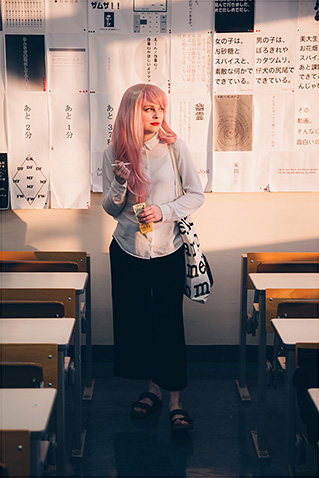
Vilde Thygesen
Home school: Oslo National Academy of the Arts Accepted: Graphic Design Period attended: September, 2016 to January, 2017 The university is located in a quiet and beautiful environment. It is easy to access and has so many outstanding facilities, both related to your specialization and to general campus life, such as several cafeterias with a wide variety of cheap and delicious meals, a Takeo paper shop, an art material shop with everything you need and of course the astonishing library designed by Toyo Ito. I studied at the Department of Graphic Design and took several classes in illustration and Japanese typography. One of the biggest differences between Tamabi and my home school was the immense amount of students, often with more than 60 people in one class, contrary to around 7 in Oslo, although both solutions has their pros and cons. I also got the impression that projects at Tamabi usually have a specific final product in mind, while the focus in Oslo circles more around the process and not so much the result.
I deeply appreciated the opportunity to participate in exiting cultural activities such as Zen meditation, tea ceremony and lessons in the Japanese language. Even though I can’t say I hadn’t been warned before applying to Tamabi, it is definitely recommended to know at least some basic Japanese before the start of the semester. Still, the staff and students are patient and understanding, and as always, the international office was very helpful and accommodating. Soon, you’ll learn to work around the limitations and to communicate better with a more visual language.
I have most certainly grown from my experience of living in Tokyo and studying at Tamabi, both professionally and personally. When I look back at my stay, I am filled with love and longing for all the amazing people I met and the culture that I got to be a part of, if only for a few months. I am left with so much new knowledge and inspiration which I will continue to apply in my future creative works. In closing, I am grateful for the opportunity to study in Japan and will forever cherish this time. I hope you will too!
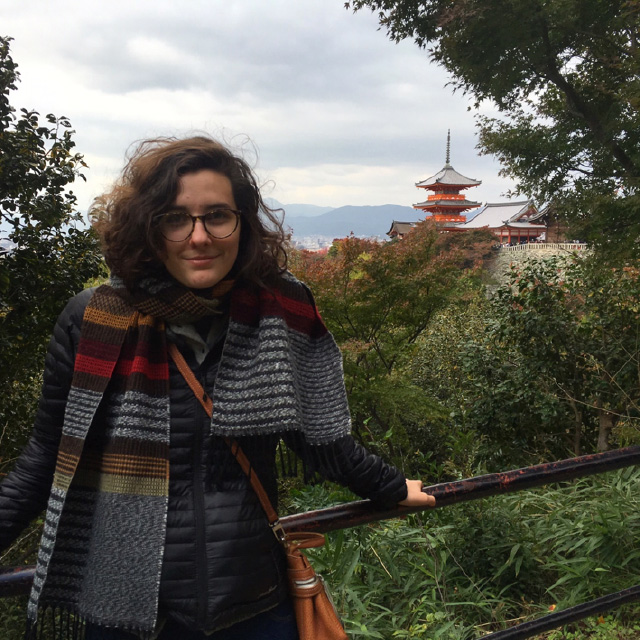
Clara Dorfi
Home school: University of Cincinnati Accepted: Product Design Period attended: September, 2016 to January, 2017 Some years prior, students from Tamabi came to my school to present their work and tour our school. I was fascinated by the projects and how different their approach to design seemed. When the opportunity came up to study at Tamabi, I was reminded of this. I also wanted to study in Japan because I knew very little about any Asian culture in general and saw this as a wonderful opportunity to expose myself to a completely new culture.
My home university is a large public university, and my program places a lot more emphasis on technical skills and practicality for the workplace. At Tamabi, there is a lot more exploration with projects and themes are much looser. I've felt more of a chance to think conceptually at Tamabi.
The facilities of Tamabi are incredible- plenty of space and equipment available. The cafeterias are also very nice and have good options. All faculty have been very helpful as well! More specifically, I've been able to participate in sponsored studios in my department, which is an incredible opportunity that I am not sure would have been possible at my home institution.
I have learned how to adapt to a completely new environment and culture, and how to work around limitations and with what I have (for example my computer failed early on in the semester, so I worked in the Mac room at Tama). I have learned to communicate better with only visuals and images, and how to design with more cultural sensitivity/awareness.
I would strongly advise for a foundation in the Japanese language. Aside from that, come into the program with an open mind and a positive attitude.

Wesley Bauer
Home school: University of Cincinnati Accepted: Product Design Period attended: September, 2016 to January, 2017 I chose Tamabi because when I visited back in 2014, I really saw an interesting and different way of thinking. Not only in the students' work in the product department, but how every person had a great sense of communal awareness, and empathy.
I could go on for hours about the differences between University of Cincinnati and Tama Art University. I am not saying that one is better than the other, but they are two completely different types of education systems. University of Cincinnati is grounded in practical design with great research, confirmed engineering and manufacturing understanding, and real life industrial design work experience. Tamabi has a fantastic tradition of pushing design at its edges and exploring the future of product design. The Tamabi product design program will teach the skills to finely tune materials, color, scale, function, design metaphors, and product story. Not to mention, absolutely excellent cafeterias with a variety of Japanese food options at a low cost. The students of Tamabi are their own breed of inspiring young artists and designers and are what make the program so highly regarded.
I learned more about the importance of finely tuned materials and processes to yield desired results for my future designs. I had a great time learning the process of traditional Japanese indigo dyeing and how to apply that to new and interesting materials and processes. I picked up some Japanese, but definitely not enough. The professors are all world renowned designers and was exciting to have them critique my work and teach me new tricks to get inspired and create.
My advice to future product students studying abroad at Tamabi is to create as much as you can, pick an aspect of Japanese culture you like and dive deep into it (even leave Tamabi every once in a while), and talk to the other students in your studio to get inspired, bounce ideas off each other, or just hang out and get to know them. Also bring a lot of warm clothes.
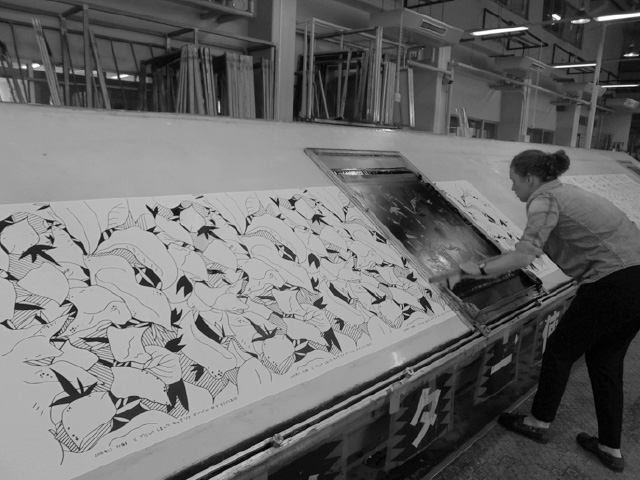
Katherine Garbutt
Home school: The Glasgow School of Art Accepted: Textile Design Period attended: September, 2016 to January, 2017 I chose to study in Japan because I wanted to learn more about traditional Japanese textile techniques. The Textiles Design department has fantastic facilities and the teaching is very “hands on”. In my home University the focus is centered on the design process, while in Tamabi the students learn more through making. The staffs were so knowledgeable and it was great to have the teaching assistants as well as the Sensei (teachers). I learned Katazome, Yuzen, and Rozome techniques which I would have been unable to study in Glasgow. The classes are organized slightly differently as well. In Glasgow we chose a technical specialism; print, knit, weave or embroidery, however in Tamabi the students chose whether they are designing for the body, space or fine art. This gives the students more freedom with the technique they chose and also it focuses their research to a particular field.
The campus at Tamabi is beautiful and it was so nice to watch it change through the seasons. The library was my favorite place to spend time, the building is designed with students in mind and it is a great place to come if you are feeling stuck on a project. All the staffs I met at Tamabi were kind and helpful and every time I needed help it was given with such kindness and patience. There was always something happening on campus, an exhibition or event and it was great to meet people from other departments. I particularly enjoyed getting to know the students who were taking part in the Pacific Rim project (a collaboration with Art Center College of Design in California, US). Their brief for this semester was called “Future Craft” and it was really interesting to hear about what they were working on.
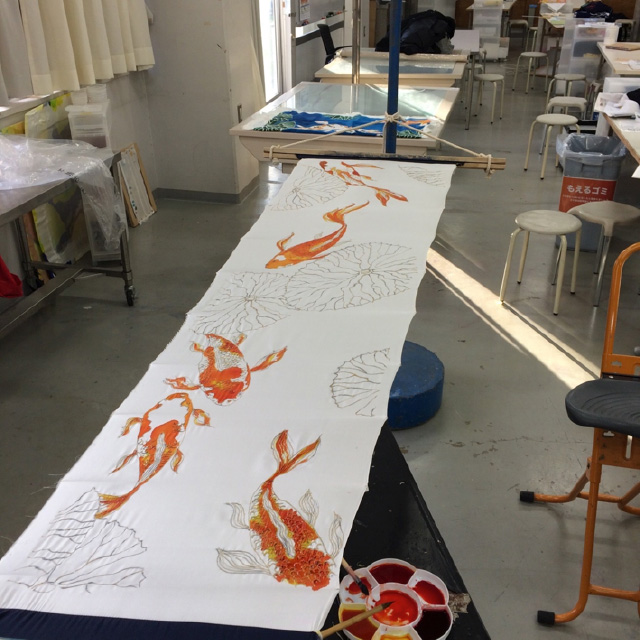
Daksha Salam
Home school: National Institute of Design Accepted: Textile Design Period attended: September, 2016 to January, 2017 To say that I’ve always wanted to visit Japan is an understatement. Japan, its people and its culture has always intrigued me. To be more specific, Japanese textile has always been my key inspiration. I came to know about this program from a senior of mine who had gone for the same exchange two years before me. Seeing the vast scope and infrastructure, I wanted to incorporate the values and learning I could take away into my design learning. Here, at the Department of Textile Design of Tama Art University, we were very lucky to have a certain amount of freedom in the classes we chose. We had the option to pick from the three studios: Space, Body and Art. I focused on various traditional dye techniques and one print course that I managed to put in the basics of using a march loom.
Yuzen was my first introduction to the classes at Tamabi. It was a technical class where dyes are resisted on to fabric using rice paste. I was under the guidance of Iyanaga sensei. Koizora (恋空) was the title for my Yuzen project. Koizora would literally mean sky of love in Japanese. Instead of translating it verbatim and showing love in the sky, I wanted to create a pun with the English word of Koi (koi fishes). Koizora was also the first Japanese movie I watched which was the main source of my inspiration. In this class we acquainted ourselves with indigenous Japanese ingredients. We were not only adjusting to the new techniques but we were also familiarizing ourselves with the language, the everyday routine and schedule of a Tamabi textile student.
Learning how to find a balance between being a student and yet trying to manage traveling around Japan and experience Japan from the perspective of a tourist was really interesting. Not having prior knowledge of Japanese was definitely a drawback but it helped me understand and learn visually with minimal conversation. It has been an enriching experience where I got to see the difference in the work culture in comparison to my home university back in India. After this exchange I want to bring in my learnings from Japan into my work in India, where I can incorporate the discipline and the work ethics into my daily life.

Alice Thompson
Home school: Chelsea College of Arts, University of the Arts London Accepted: Textile Design Period attended: September, 2016 to January, 2017 Tamabi was an exceptional and special place to study; I wholly enjoyed my time and it was what I expected and so much more. I was able to decide with guidance what classes to take from the curriculum. At Chelsea we specialise (in either Print, Stitch, Knit, Weave) after the second semester in first year of degree; I specialised in Knit. At Tamabi, I took classes predominantly in weaving, and also Katazome (stencil dyeing) and in hand knitting/crotchet/ply split. So it was a wonderful opportunity to extend my design practice and have more time to experiment in weaving especially. Using national materials and natural processes was something I wasn’t as familiar with in my own work, and is now something I will definitely work to back in the UK. Using natural dyes, materials such as in the Banana Textiles project, and making things more from scratch was something I saw more and more as the term went on and I was encouraged to do in my own work too.
I found the work of the students and the many projects at Tamabi consistently inspiring and original. The ever-changing displays and the presentations across all departments were great to see day to day at Tamabi, for example in the viewing gallery in the Textile department through to see the graduation works, and also the work in Pacific Rim was so inspiring and impressive.
I will encourage the students who have an opportunity to go on exchange next year to definitely come to Tamabi. If I had any advice, I would say to just be aware that the classes are taught mainly in Japanese. But I found it easy enough to understand through the visual communication of the demonstrations, and there would always be someone, whether this be a staff member or student to help with something. Each and every single person was so friendly, and people really took the time and patience to help.
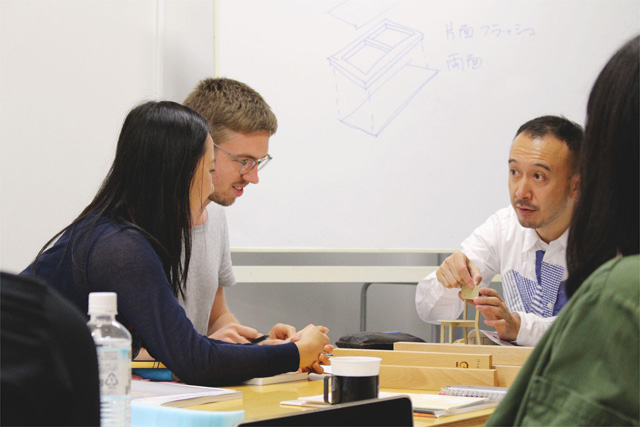
Sebastian Becher
Home school: Berlin University of the Arts Accepted: Architecture and Environmental Design Period attended: September, 2016 to January, 2017 My semester started off with the task to design a wooden chair. Led by two professors, we learned about woodworking and design. The wood workshop offers a huge selection of machines and the staff helps out as good as they can. Making a chair was much harder than I thought, but leaves you with a great feeling after finishing and being able to use your own creation.
The second project dealt with the design of a students’ museum on the campus of Tamabi. A task which managed to change my perspective on architecture in general, as I learned to incorporate different elements, found specifically in Japanese architecture, into my design process. Having been able to present and discuss my work with Toyo Ito at the final presentation was a big honor and a very memorable experience.
Getting to and around campus was very easy, the campus offers a wide range of activities including the library, photo studio, bakery, material store and so on. I was stunned by the helpfulness of all the people and would definitely recommend this experience to everyone who’s interested to go and study in Japan. It really helped me to widen my horizon and open up to new and different things. Meeting the other exchange students on campus or in Tokyo was also great to share experiences and give advice during the stay. Seeing a different way of living, teaching and learning is always interesting and especially the broadness of available courses (Architecture, Interior and Landscape) makes Tamabi special and unique.

Antonia Cattan
Home school: Berlin University of the Arts Accepted: Information Design (Art and Media) Period attended: September, 2016 to January, 2017 I chose to come to Japan for several reasons, but mainly because I guessed it was a country with a somehow untouched culture and traditions, that were kept so strong throughout centuries even though it followed the technological and capitalist developments like elsewhere. My “guessing” turned out to be right!!!
The student life at Tamabi was very nice, although there are so many differences in comparison with my home school in Berlin. The staff was incredibly helpful, both from the International office and from the Information Design Department I was enrolled, always trying to make my life in the campus as productive as possible. Besides, the facilities, workshops and equipment are really great, what helped me a lot to develop a project during my stay.
If I could go back in time, the only thing I wish I did better is to learn some specific handcraft or technique I could only have access in Japan, so I would advise future exchange students to focus on exploring the amazing facilities they will have at Tamabi that they don’t have at their home school!

Magdalena Mitterhofer
Home school: Berlin University of the Arts Accepted: Information Design (Art and Media) Period attended: September, 2016 to January, 2017 I wanted to go to live in Japan for many different reasons. Too many to list here. When I found out that there was a possibility to do an exchange semester in Tokyo, I was very happy. I could choose between Tama Art University and Musashino Art University, and I chose Tamabi because it seemed to offer more specification in the topics I am interested in: New Media, Film, and Information Design. I was looking for something more specific, after three years in Berlin University of the Arts where I was simply studying fine arts.
Explaining the difference between my home school and Tamabi, I would start with their locations. While UdK is located in the center of the city, Tamabi is far off Tokyo’s busy areas. I think that makes a big difference in the way students work. The quiet atmosphere at Tamabi, what could possibly distract you, lets people study more intensively, I think. The attitudes of the students towards the “Art world” were so different as well. Many students live in the school’s neighborhoods, but I lived near Shinjuku which made my way to school a real travel every time. That was totally fine for me, but it meant, that I had to organize myself. In the evening I was often sitting in the beautiful library building and watching the sun go down. In the train rides I was reading “Almost Transparent Blue” by Ryu Murakami, “In Praise of Shadows” by Jun’ichiro Tanizaki, and Roland Barthe’s “Empire of Signs”.
If now someone asks me what I learned at Tamabi, it is difficult to answer, but I think I learned a lot about other forms and understanding of art. In Akihiro Kubota’s class, people spoke about terms like “Bio Art”, a concept I didn’t know about before. “Media Art”, a very broad concept, seems to be very big in Japan, and I was impressed how professional students in my class worked with new programs, programming and interactive systems. Kubota sensei’s colleagues, Akihiko Taniguchi and Akihide Saito, a new media artist and a photographer respectively, seem to be real role models, and I was really touched about how they often took care of their students. In Chihiro Minato’s class, I got lots of information about contemporary exhibitions in Tokyo. He showed us many websites, parts of movies and artworks he thought we should know about. His class was very international, so we spoke English which was nice. We also spoke very casually about Japanese art history, and its reciprocal influences with the west. That was quite interesting and I am planning to research more on that. By the way, Chihiro Minato is a research member in the “Institute for Art Anthropology”, located at Tama Art University’s Hachioji campus. It has many books. It is a nice space with many plants - worth a visit.
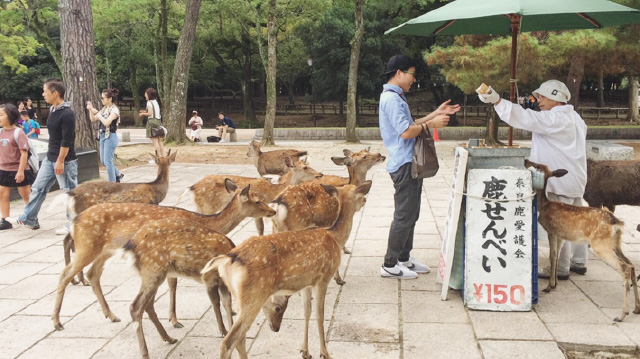
HUANG Luqi
Home school: China Central Academy of Fine Arts Accepted: Information Design (Interaction Design) Period attended: September, 2016 to January, 2017 Because of the brilliant traditional culture and perfect design jobs, I chose Japan for my first place and became an exchange student at Tamabi. I think the biggest difference between Tamabi and my home school CAFA is the meaning of “Freedom”. For example, teachers here usually communicate well with students and ask what they think about the students’ designs, but they never obstruct their autonomous works.
I always liked to stay in the library and got lots of information. Also, one of the most important things for me was to travel around Japan. Traveling brought me lots of memorable experiences. If there is any suggestion to the next exchange student, I will tell him/her not to forget to travel around where you live. Thank you very much!
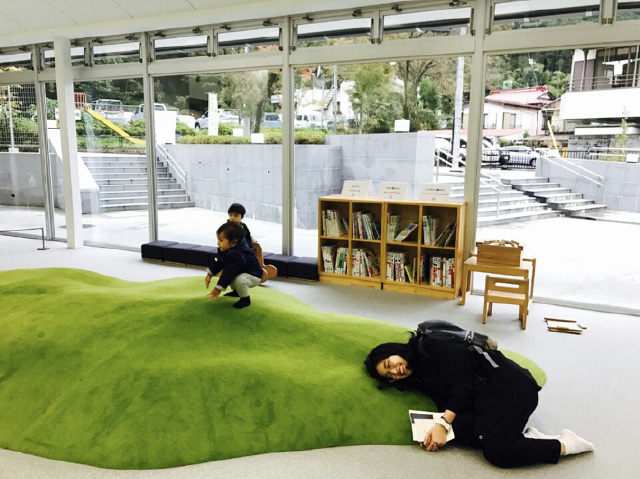
YU Junghwa
Home school: Hongik University Accepted: Information Design (Interaction Design) Period attended: September, 2016 to January, 2017 I feel very lucky to have been able to study at Tama Art University, and in fact, I still cannot believe my good fortune! I had been interested in Japanese culture and had been watching a lot of Japanese animation and movies for quite some time, but there turned out to be much about life in Japan that differed from my expectations, which was very exciting for me.
My study abroad was in the Department of Information Design, which gave the students a large degree of freedom, so I was able to take on various challenges. Tamabi has a center called CMTEL (Colors / Materials / Trends Exploration Laboratory) where you can search for the most up-to-date art and design materials to use in your projects, and a beautiful library where you can view all kinds of books and movies, both of which aided me greatly in my studies. I was also able to meet diverse people at Tamabi, and my encounters with exchange students from other schools were highly valuable and enjoyable, while with the Japanese students I was able to converse a lot in Japanese. My part-time job and events I attended gave me numerous opportunities to interact with people as well. Thank you very much for this marvelous and unforgettable opportunity!

SHAU Tzu
Home school: National Taiwan University of Arts Accepted: Ceramic, Glass, and Metal Works (Ceramic) Period attended: September, 2016 to January, 2017 Studying at Tama Art University is a fulfilment of my long dream to learn the spirit and skill of delicate Japan ceramics works. Inarguably, Japan is a country full of aesthetics everywhere in everything, especially in art and in food. So many museums are my favorite places to go. And having a big meal of Sushi has brought me so many delightful moment and memory now and forever. Also, various religious festivals and culture exhibition have made my staying in Japan colorful and unforgettable.
The library of Tamabi is so informative and helpful for me. There are many kinds of precious and useful books available for different needs. Through application, much more, the library can even buy the book for me if I cannot find it there. It is really sweet and convenient.
Yes, I do feel impressed by many things here in Japan, especially by Japanese's obedience in life and perseverance in work. Although my classmates are sometimes crazy and noisy but they always follow the rules eventually.
